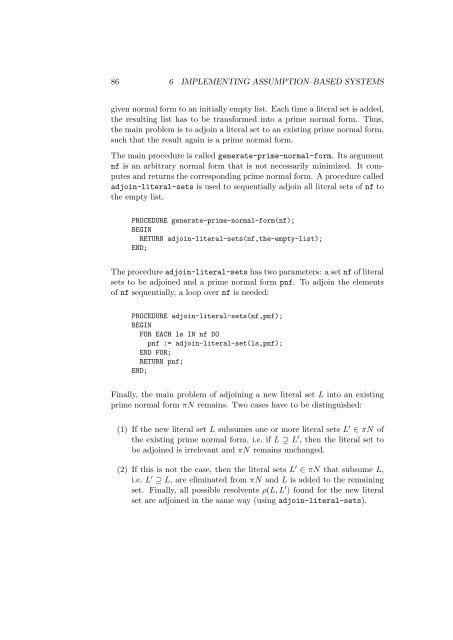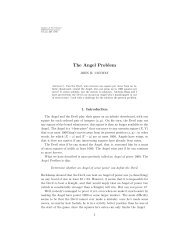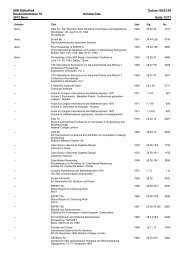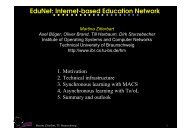Propositional Argumentation Systems and Symbolic Evidence Theory
Propositional Argumentation Systems and Symbolic Evidence Theory
Propositional Argumentation Systems and Symbolic Evidence Theory
You also want an ePaper? Increase the reach of your titles
YUMPU automatically turns print PDFs into web optimized ePapers that Google loves.
86 6 IMPLEMENTING ASSUMPTION–BASED SYSTEMS<br />
given normal form to an initially empty list. Each time a literal set is added,<br />
the resulting list has to be transformed into a prime normal form. Thus,<br />
the main problem is to adjoin a literal set to an existing prime normal form,<br />
such that the result again is a prime normal form.<br />
The main procedure is called generate-prime-normal-form. Its argument<br />
nf is an arbitrary normal form that is not necessarily minimized. It computes<br />
<strong>and</strong> returns the corresponding prime normal form. A procedure called<br />
adjoin-literal-sets is used to sequentially adjoin all literal sets of nf to<br />
the empty list.<br />
PROCEDURE generate-prime-normal-form(nf);<br />
BEGIN<br />
RETURN adjoin-literal-sets(nf,the-empty-list);<br />
END;<br />
The procedure adjoin-literal-sets has two parameters: a set nf of literal<br />
sets to be adjoined <strong>and</strong> a prime normal form pnf. To adjoin the elements<br />
of nf sequentially, a loop over nf is needed:<br />
PROCEDURE adjoin-literal-sets(nf,pnf);<br />
BEGIN<br />
FOR EACH ls IN nf DO<br />
pnf := adjoin-literal-set(ls,pnf);<br />
END FOR;<br />
RETURN pnf;<br />
END;<br />
Finally, the main problem of adjoining a new literal set L into an existing<br />
prime normal form πN remains. Two cases have to be distinguished:<br />
(1) If the new literal set L subsumes one or more literal sets L ′ ∈ πN of<br />
the existing prime normal form, i.e. if L ⊇ L ′ , then the literal set to<br />
be adjoined is irrelevant <strong>and</strong> πN remains unchanged.<br />
(2) If this is not the case, then the literal sets L ′ ∈ πN that subsume L,<br />
i.e. L ′ ⊇ L, are eliminated from πN <strong>and</strong> L is added to the remaining<br />
set. Finally, all possible resolvents ρ(L, L ′ ) found for the new literal<br />
set are adjoined in the same way (using adjoin-literal-sets).








